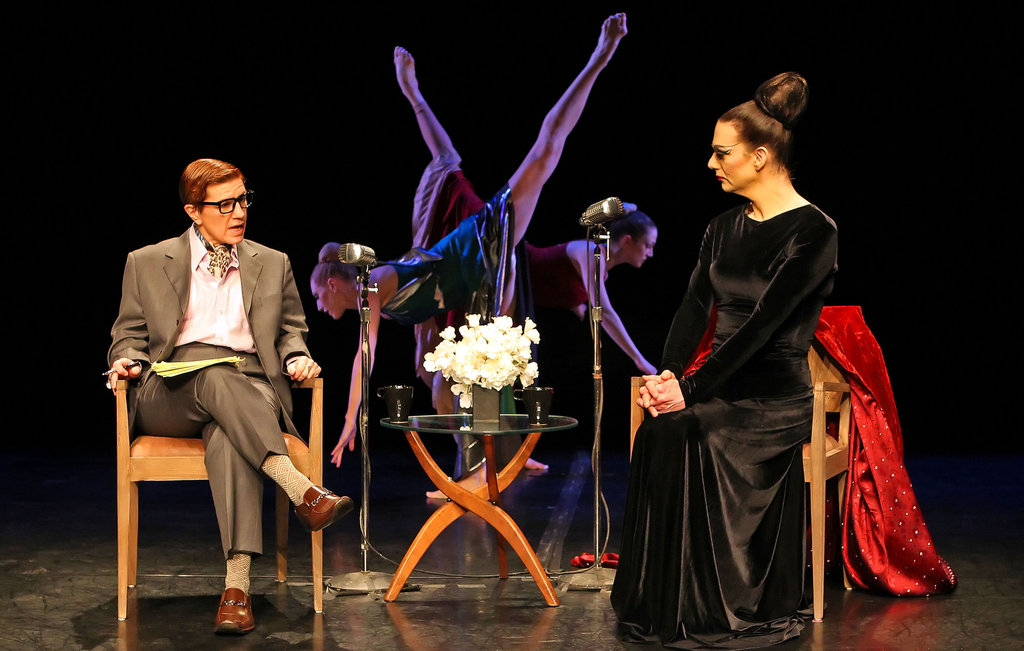Zahed Aryadarei was born in his parents’ house. I overheard this father of Sulaimon, Sydney and Shaheen tell stories from his childhood in Teheran at the opposite end of a long, impromptu dinner table in the middle of his South Philly home. Zahed and his wife, Shannon, moved into their row house near 17th & Jackson in 2000, before he got detained during post-9/11 axis-of-evil hysteria, before they had two boys and a girl, and before Headlong Dance Theater staged a Live Arts performance in their living room.
This Town Is a Mystery invites an audience of 12 into one of four Philly homes, where the inhabitants – families with children who like to do things together – tell, perform, dance and share who they are. The luck of the draw (ticket buyers take the risk of not knowing the location in advance) brought me into a neighborhood I’d never visited before: a tightly knit community of families, most of whom have strong ties to their ancestral homelands, who knock on each other’s doors, look after each other’s kids and trust their neighbors to freely invite them in for tea. “Where I grew up, we shared everything,” Zahed said about his upbringing in Iran, “with friends, with neighbors – this is what life is!”
This sense of hospitality comes with its dose of mystery, partly because the guests have paid good money to enter the premises and were asked to contribute a dish for the post-performance potluck.
Upon entry, audience members sat in two rows of chairs facing a cleared-out living room doubling as a stage. Outside, two men were fixing a car, and a teenaged girl was phoning on her stoop. Inside, Headlong had created an alternate reality. The space was warmly lit by strings of holiday light bulbs scattered on the floor, hung from the dropped ceiling and placed inside a large china cabinet filled with karate trophies and a smiling snowman. Slide- and film projections of the family illuminated the sidewalls. The kids peeked in from staircases and back rooms. Shannon greeted each guest personally at the door and told us to make ourselves at home. The father was as yet unseen.
By the time the lights dimmed and Doris Day sang “Can’t Help Falling In Love,” the Aryadareis had ushered us into a most intimate of spheres. Slowly, regally, Zahed walked in from the back kitchen. Simultaneously, Shannon self-consciously descended the side staircase. They met at the bottom of the stairs, held hands and gazed forward. I immediately sensed the powerful bond between them. It moved me to tears. The performance wasn’t even a minute long, and the performers had already achieved an emotional chemistry that trained actors hope to portray in the course of a career.
The following scenes illuminated the father’s global journey to South Philly, the mother’s unspoken hopes for each of her children as she told the stories of their births, and a karate dance number by the trio of wound-up pre-teens. Co-director Amy Smith told me afterwards that This Town Is A Mystery takes Headlong’s penchant for making site-specific work to “extremes” – and indeed, these extremes reside not so much in the performance by “non-trained actors,” but in the question of, What is a performance? The Aryadarei family had already gotten up early to get the kids ready for school, gone to work, returned home to prep the house and get warmed up for their 7pm show. Arguably, my performance experience began when I asked my boyfriend to make a dressing for the salad I was bringing to the potluck. And it hadn’t ended by the time I pulled the car out of its parking spot on a block I’d never set foot on before. The elevated sense of occasion that usually accompanies a theater outing became a fluid experience.
Most impressively, Headlong and the Aryadareis didn’t simply transform their living room into a stage, but they created a “third space” – an environment that is not merely the hybrid of the home-space and the performance-space, but a third, unique environment that facilitates cross-cultural, cross-neighborhood interactions and honors both performers and guests as fully human and undoubtedly welcome.
Headlong Dance Theater, This Town Is A Mystery, locations undisclosed, September 7-22, 2012, 7 PM. http://livearts-fringe.ticketleap.com/this-town-is-a-mystery/
See also Jonathan Stein on another household in This Town.






